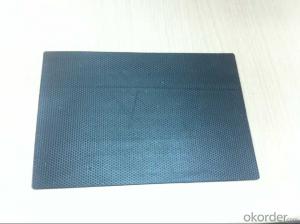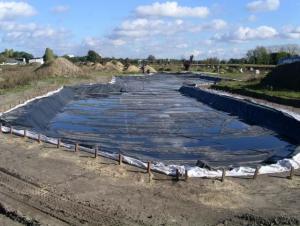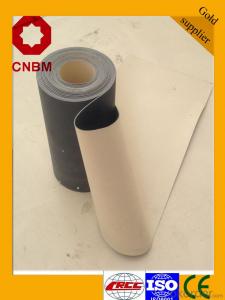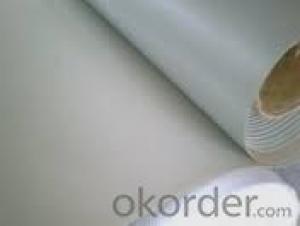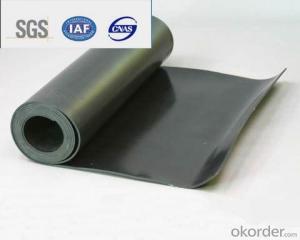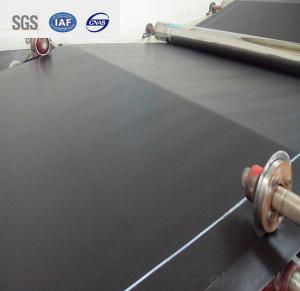EPDM roof /pond/basement waterproof membrane manufacturer
- Loading Port:
- Qingdao
- Payment Terms:
- TT or LC
- Min Order Qty:
- 1000 m²
- Supply Capability:
- 100000 m²/month
OKorder Service Pledge
OKorder Financial Service
You Might Also Like
EPDM Coiled Rubber Waterproof Membrane for Ponds
Description Of EPDM Rubber Waterproof Membrane:
1. EPDM waterproof membrane is made from ternary ethylene-propylene rubber, which is for waterproofing of exposed and non-exposed applications.
2. EPDM waterproof membrane production adopts the world-advanced equipment of cold feeding extrusion and continuous vulcanization technology.
3. EPDM waterproof membrane is of high elasticity among high polymer waterproof materials and becomes a world-popular waterproofing material.
Main Features of EPDM Rubber Waterproof Membrane:
1. Excellent physical and mechanical performance
2. High tearing resistance
3. Good deformation adaptability
4. High puncture resistance
5. High aging resistance
6. UV resistance
Specifications of EPDM Rubber Waterproof Membrane:
Material | EPDM Rubber |
Size | 1.2m (width)*20m (length) or customized, weldable type 2.05m or 4m width |
Thick | 1.2mm, 1.5mm, 2.0mm |
Type | Vulcanized & Weldable |
Pattern | Non-reinforced (homogeneous) |
Certificate | ISO9001/14001 |
Applications of EPDM Rubber Waterproof Membrane:
1.Roofs, Basement, Toilets
2. Industrial and civil building waterproofing
3. Geosynthetic liner for swimming pool, channels, irrigation system
4. Especially suitable for projects with high requirements in durability, anti-corrosion and deformation.
IMages of EPDM Rubber Waterproof Membrane:
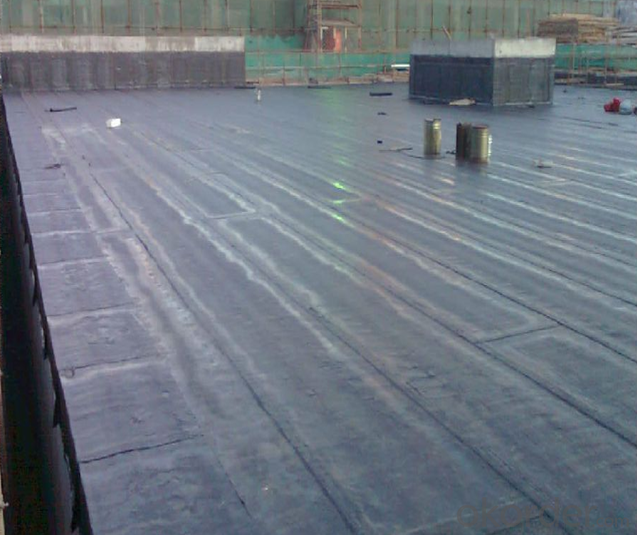
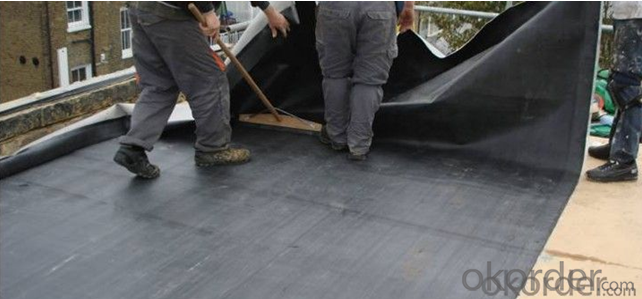
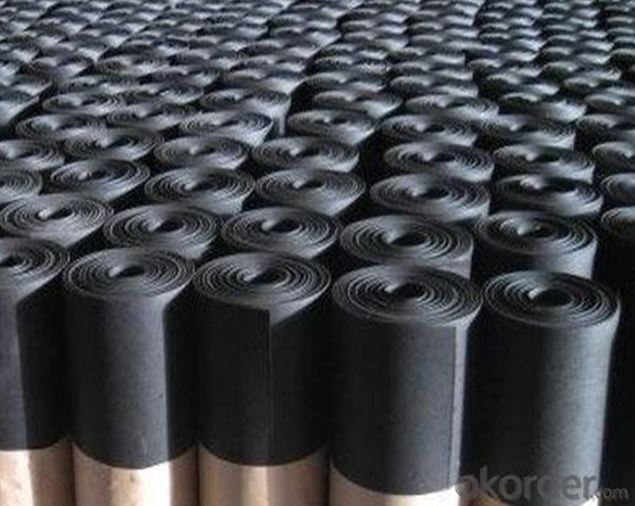
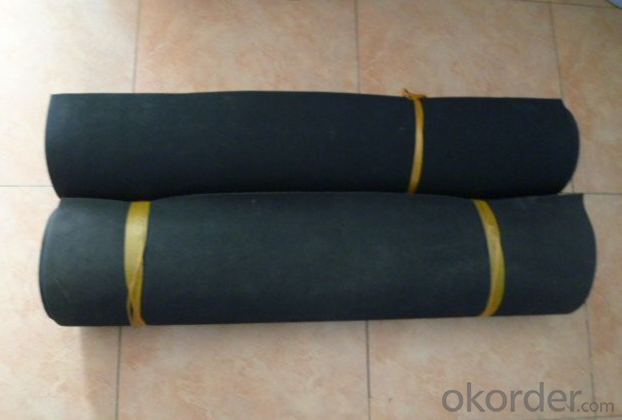
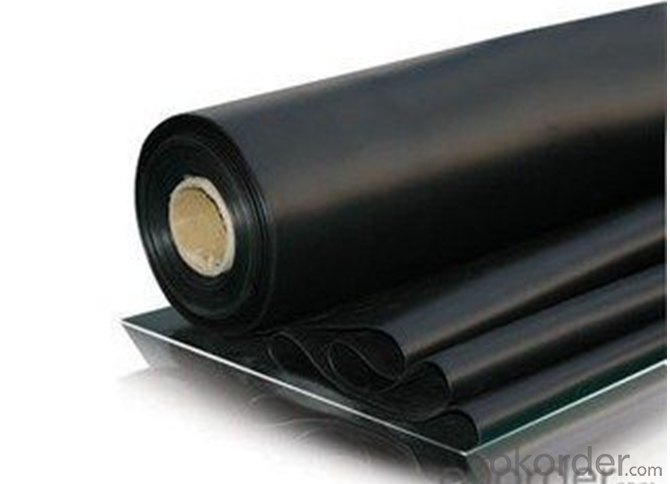
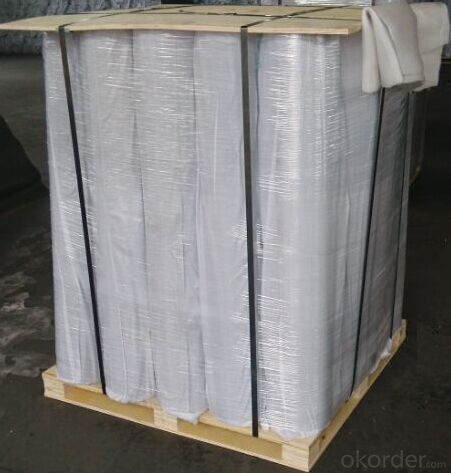
FAQ:
1. What are we supplying?
We are specialized in producing Colorful Asphalt Roof Shingle, SBS/APP modified bitumen waterproof membrane, Self adhesive bitumen waterproof membrane, PVC waterproofing membrane, EPDM rubber roofing membrane, Single Component Polyurethane Waterproof Coating, and Spray Polyurea Waterproof Coating
.
2. How Many years experience do we have?
We have been exported to more than 20 countries in the past 15 years.
3. How long do we usually reply your request?
We always reply our customer within 24 hours.
- Q:Is a waterproofing membrane resistant to algae or moss growth?
- Yes, a waterproofing membrane is typically resistant to algae or moss growth. The materials used in waterproofing membranes are designed to prevent the growth of organic matter, including algae and moss.
- Q:Can a waterproofing membrane be used for a planter box wall?
- Yes, a waterproofing membrane can be used for a planter box wall. A waterproofing membrane is designed to prevent water from penetrating through a surface, making it an ideal choice for a planter box wall where moisture is present. By applying a waterproofing membrane to the interior surface of the planter box, you can effectively protect the wall from moisture damage and prevent water from seeping into the surrounding soil. This can help extend the lifespan of the planter box and prevent any potential water damage to the surrounding area. However, it is important to ensure that the waterproofing membrane is compatible with the materials used in the planter box construction and follow the manufacturer's instructions for proper installation.
- Q:Can a waterproofing membrane be used on concrete bridges?
- Yes, a waterproofing membrane can be used on concrete bridges. Waterproofing membranes are commonly utilized in infrastructure projects, including concrete bridges, to protect the structure from water penetration and damage. These membranes create a barrier that prevents water from seeping into the concrete, thus enhancing the durability and longevity of the bridge.
- Q:Does a waterproofing membrane require any specific curing time before it can be exposed to water?
- Before being exposed to water, a waterproofing membrane typically needs a specific amount of time to cure. This curing period is necessary for the membrane to fully bond and create a protective barrier against water infiltration. The length of time required may vary depending on the type of membrane and the instructions provided by the manufacturer. To guarantee the effectiveness and durability of the membrane, it is crucial to adhere to the recommended curing time. Premature exposure to water before the curing process is finished could compromise the membrane's performance, resulting in leaks or damage. Therefore, it is essential to follow the manufacturer's guidelines and allow the necessary curing time before subjecting the waterproofing membrane to water.
- Q:Does a waterproofing membrane require any specific cleaning or maintenance procedures?
- Yes, a waterproofing membrane does require specific cleaning and maintenance procedures to ensure its longevity and effectiveness. Regular cleaning and maintenance help to prevent the buildup of debris, dirt, and other contaminants that can compromise the membrane's ability to keep water out. The specific cleaning and maintenance procedures can vary depending on the type of waterproofing membrane used, but some general guidelines apply. Firstly, it is important to regularly inspect the membrane for any signs of damage, such as cracks, tears, or deterioration. If any issues are detected, they should be promptly repaired or replaced to prevent further damage. In terms of cleaning, it is recommended to remove any loose debris or dirt from the membrane surface using a soft-bristle broom or a leaf blower. Avoid using harsh chemicals or abrasive materials that can damage the membrane. Instead, use a mild detergent or specialized cleaning solution recommended by the manufacturer. Gently scrub the surface with a soft brush or sponge, and rinse thoroughly with clean water. Additionally, it is crucial to keep the surrounding drainage systems clear and free from any obstructions. Regularly inspect and clean gutters, downspouts, and drains to ensure proper water flow and prevent any potential water damage. Lastly, it is advisable to have the waterproofing membrane professionally inspected and maintained on a regular basis. This can help identify any potential issues early on and ensure that the membrane is functioning at its optimal level. Overall, by following these specific cleaning and maintenance procedures, you can prolong the lifespan of the waterproofing membrane and maintain its effectiveness in preventing water infiltration.
- Q:Does a waterproofing membrane require any special tools for installation?
- Yes, installing a waterproofing membrane typically requires special tools such as a trowel, brush or roller for application, utility knife for cutting the membrane, and a heat gun for seam sealing.
- Q:Can waterproofing membranes be used on roofs with slopes?
- Yes, waterproofing membranes can be used on roofs with slopes. These membranes are designed to provide a protective barrier against water infiltration and are commonly used on roofs with varying degrees of slope to prevent leaks and water damage.
- Q:Does a waterproofing membrane require any specific safety precautions during installation?
- Specific safety precautions are necessary when installing a waterproofing membrane. Consider the following key precautions: 1. Personal Protective Equipment (PPE): Installers must wear appropriate PPE, such as gloves, safety glasses, and protective clothing, to avoid skin contact with the membrane and potential chemical hazards. 2. Adequate Ventilation: Ensure that the installation area has proper ventilation to prevent the accumulation of fumes or vapors. If working in a confined space, use ventilation systems to eliminate any potentially harmful gases or odors. 3. Hazardous Chemicals: Some waterproofing membranes contain hazardous chemicals or solvents. Installers should carefully read and adhere to the manufacturer's instructions for handling and using these products. Proper storage, handling, and disposal of chemicals are crucial to prevent accidents or environmental contamination. 4. Slips and Falls: The surface can become slippery during installation, particularly when applying the membrane on wet surfaces. Installers should take precautions to maintain stability and utilize safety equipment like harnesses or guardrails when working at heights to prevent falls. 5. Heat Hazards: Proper installation of certain waterproofing membranes requires the use of heat. Installers should exercise caution when working with heat sources such as torches or heat guns to prevent burns or fire hazards. Keep fire extinguishers readily available and ensure that personnel receive adequate training on fire safety protocols. 6. Electrical Safety: Waterproofing membranes might be installed in areas where electrical systems are present. Installers should exercise caution when working near live electrical wires or outlets and adhere to proper electrical safety procedures to prevent electric shocks or fires. It is crucial for installers to undergo comprehensive training and diligently follow all safety guidelines provided by the manufacturer. This will help minimize the risk of accidents, injuries, or property damage during the installation process.
- Q:Can a waterproofing membrane be used in tunnels?
- Yes, a waterproofing membrane can be used in tunnels. Waterproofing membranes are commonly used in tunnel construction to prevent water infiltration and protect the tunnel structure from damage caused by moisture. These membranes are designed to provide a barrier against water, keeping the tunnel dry and secure.
- Q:Can a waterproofing membrane be used for a rooftop garden protection?
- Yes, a waterproofing membrane can be used for rooftop garden protection. A waterproofing membrane is designed to prevent water from seeping through the roof, which makes it an ideal choice for protecting a rooftop garden. It creates a barrier that keeps water out, preventing any potential damage to the structure of the rooftop or the plants in the garden. In addition to providing waterproofing, some membranes also offer other benefits such as UV resistance and root resistance, which further enhance their suitability for rooftop garden protection.
1. Manufacturer Overview |
|
|---|---|
| Location | |
| Year Established | |
| Annual Output Value | |
| Main Markets | |
| Company Certifications | |
2. Manufacturer Certificates |
|
|---|---|
| a) Certification Name | |
| Range | |
| Reference | |
| Validity Period | |
3. Manufacturer Capability |
|
|---|---|
| a)Trade Capacity | |
| Nearest Port | |
| Export Percentage | |
| No.of Employees in Trade Department | |
| Language Spoken: | |
| b)Factory Information | |
| Factory Size: | |
| No. of Production Lines | |
| Contract Manufacturing | |
| Product Price Range | |
Send your message to us
EPDM roof /pond/basement waterproof membrane manufacturer
- Loading Port:
- Qingdao
- Payment Terms:
- TT or LC
- Min Order Qty:
- 1000 m²
- Supply Capability:
- 100000 m²/month
OKorder Service Pledge
OKorder Financial Service
Similar products
New products
Hot products
Hot Searches
Related keywords
